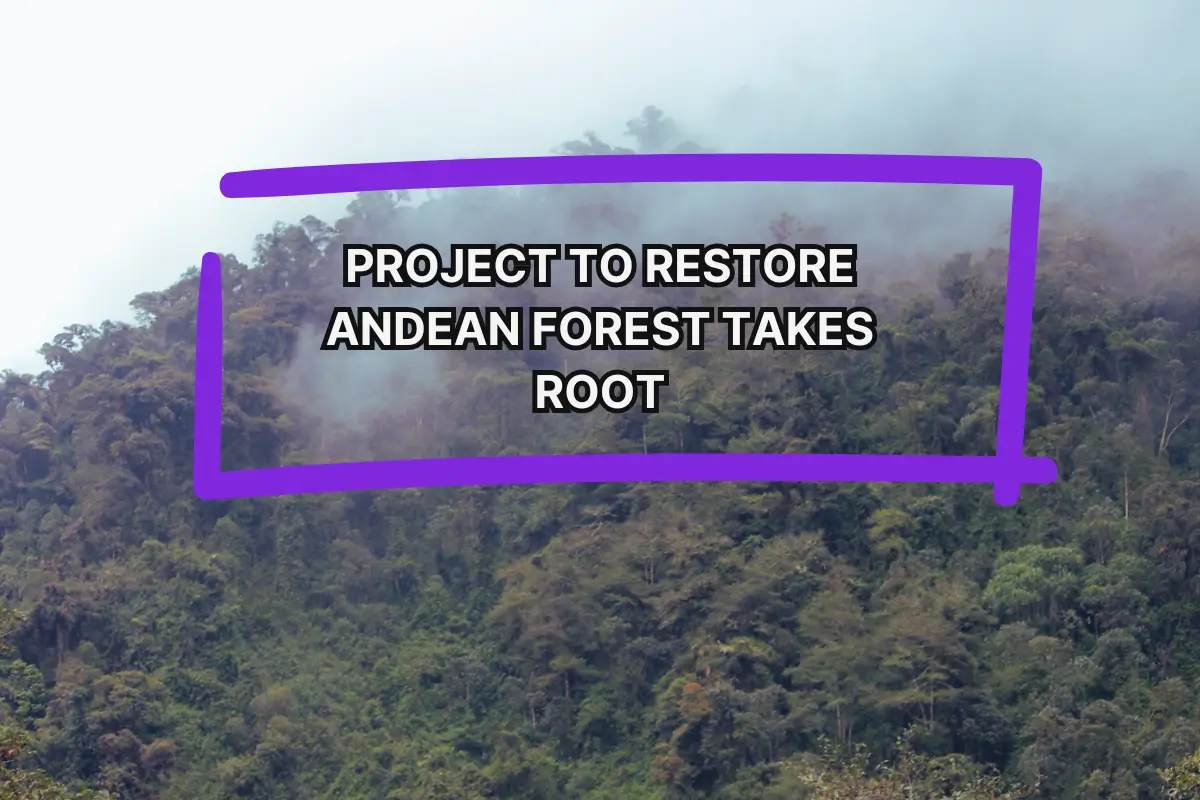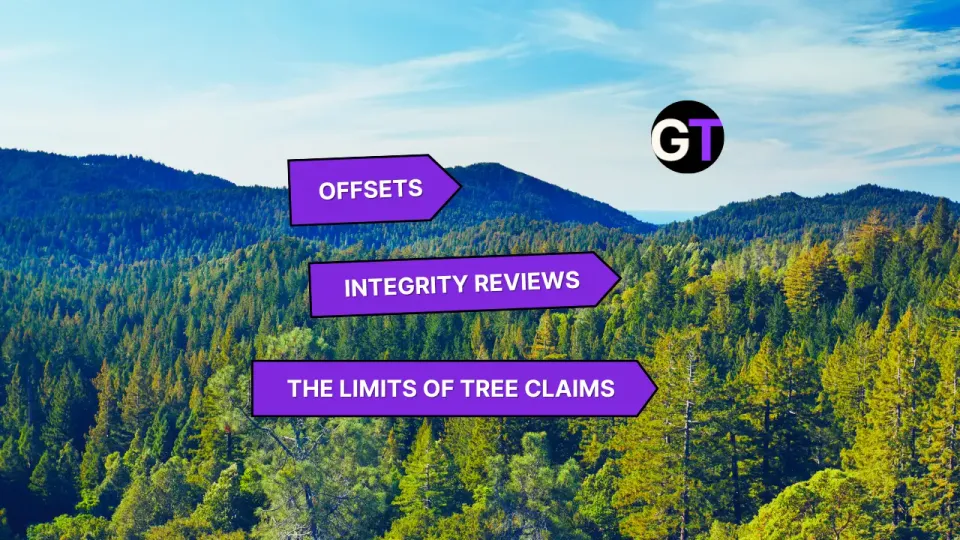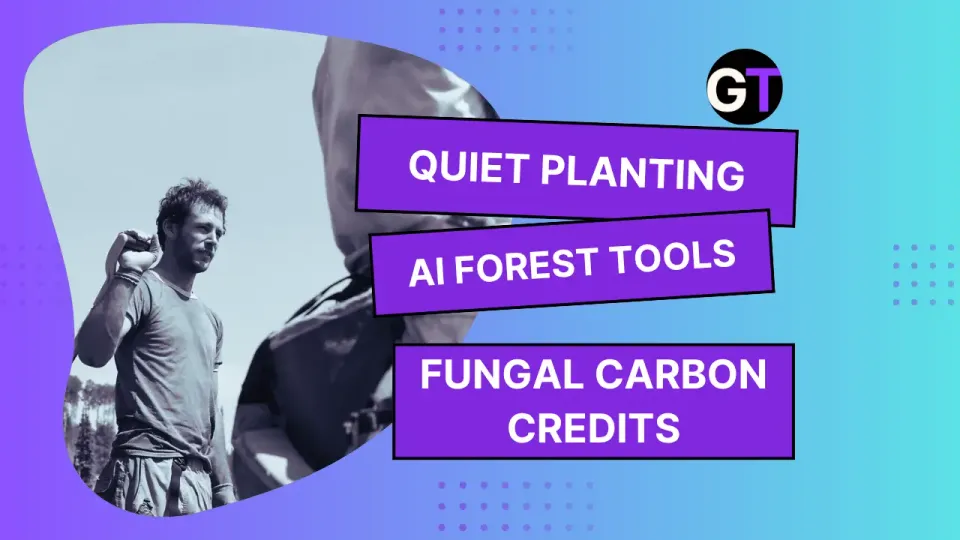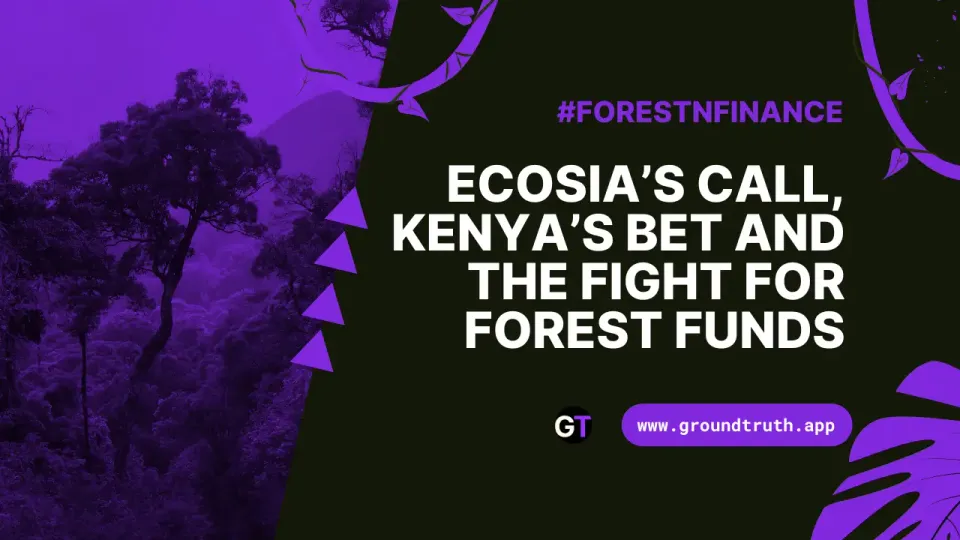Project to Restore Andean Forest Takes Root
Acción Andina restores Andean forests, claimign to engage 25,000 people to plant 10M trees.

This story by Antonio José Paz Cardona was originally published in Mongabay
- n 2024, the United Nations recognized seven landmark projects worldwide as outstanding examples of success under its ongoing Decade on Ecosystem Restoration (2021-2030).
- One of them was Acción Andina (Andean Action), an initiative that has launched 23 restoration and conservation projects focused on the high-altitude Polylepis forests of Peru, Chile, Bolivia, Argentina and Ecuador.
- More than 25,000 people from 200 communities have restored nearly 5,000 hectares (12,400 acres) of these forest and protected more than 11,250 hectares (27,800 acres) of existing woodland.
- The initiative next aims to expand into Colombia and Venezuela.
Three years ago, while exploring the Mojanda mountain range in Ecuador, a team of researchers from a local NGO and a government research institute stumbled upon a small, unusual mouse. The expedition’s aim was to study the fauna and flora that inhabit the region’s Polylepis forests — a genus of high-altitude Andean plants that includes small trees and shrubs, commonly called queuñas. These forests, though severely diminished in many areas, are essential for ensuring water security in the region. The scientists left with a variety of collected specimens, including the tiny, intriguing mouse.
“After meticulous analysis and comparison with all previously described species, our mammal specialist realized that the small mouse captured in Mojanda had several unique characteristics that did not match any known rodents in the area,” says Francisco Tobar, a natural resources engineer with the Birds and Conservation Foundation (Fundación Aves y Conservación). “Genetic and molecular analyses confirmed that it was an entirely new species.”
The mammal research team at the National Institute of Biodiversity (INABIO) is currently preparing a formal description of the species, which will be announced soon, he says.
This discovery is just one part of the work being carried out by a group of Ecuadorian organizations under the community-led initiative Acción Andina (Andean Action). Co-founded by the nonprofit organizations Global Forest Generation and Andean Ecosystems Association (ECOAN), Acción Andina aims to protect and restore high-altitude Andean forests in Peru, Bolivia, Chile, Argentina and Ecuador, ensuring the preservation of vital water resources for millions of people across the region.
In fact, last February, Acción Andina was recognized by the United Nations as one of seven flagship initiatives for global restoration. The U.N. has declared 2021-2030 as its Decade on Ecosystem Restoration, emphasizing not only the urgent need to conserve remaining natural areas, but to restore what has already been lost.
“As we continue to face a triple planetary crisis of climate change, nature and biodiversity loss, and pollution and waste, now is the time we must double down and accelerate restoration initiatives,” said Inger Andersen, executive director of the U.N. Environment Programme (UNEP).
Constantino Aucca’s dream
In 1989, Constantino Aucca was on a scientific expedition with Danish ornithologist Jon Fjeldså, traveling between the regions of Apurímac and Ayacucho in Peru. Fjeldså was nearing completion of his book Birds of the High Andes, and Aucca, an experienced Indigenous guide and expert on the region, was accompanying him on his final trips, braving harsh weather conditions and the dangers of the Shining Path, the armed group that controlled the area at the time.
At the end of the expedition, Fjeldså asked Aucca what he wanted in return for his work. “A master’s degree and a doctorate,” Aucca replied. But the Danish scientist had a different idea. “Your mission,” he told him, “is to care for, study, and protect the Polylepis forests of the Andes.”
Aucca was taken aback. Aucca’s Quechua surname means “warrior,” but at that moment, he felt only surprise and disappointment. “How can you give me that mission when I come from such a humble background?” he asked. Fjeldså, however, promised to support him and assured him that, in time, the knowledge he had gained would be valued — so much so that others would seek his guidance in the fight to conserve the forests.
Thirty-five years have passed since that pivotal moment, and today, Constantino Aucca is a biologist and a leading figure in community-based conservation. Since 2000, he has served as president and co-founder of ECOAN.
“We witnessed immense suffering and hardship in the local and Indigenous communities of the Andes,” Aucca recalls. “So, my friends Gregorio Ferro, Efraín Samochuallpa, Willy Palomino and I decided that if we were going to enter the world of conservation, we had to do something for these communities. That’s how ECOAN was born. What sets us apart from other organizations is that we implement conservation initiatives in direct coordination with local actors — ensuring that our work benefits the communities themselves.”
Among friends and colleagues, Constantino Aucca is known simply as “Tino.” He says 2014 was a turning point for ECOAN, driven by his frustration with the empty rhetoric and lack of action on environmental issues at the U.N.’s series of annual climate summits, or conference of the parties (COPs).
“As a group, we decided to send a message to the world that action is possible,” he says. “In a single day, we planted more than 57,000 [queuña] trees high in Huilloc [in Cusco, Peru]. We called the event Queuña Raymi, or the Festival of the Queuñas.”
From that year on, Queuña Raymi gained traction across the Peruvian Andes, and Aucca never stopped dreaming of expanding the initiative to other Andean countries. “Queuñas grow from Venezuela to Patagonia,” he points out. In 2018, with the support of new international partners, that dream became a reality, giving rise to Acción Andina.
“In 2018 I was deeply interested in facilitating investments in forestry initiatives,” says Florent Kaiser, CEO of the NGO Global Forest Generation. “That’s when I was contacted by Constantino, and he told me about his project. He told me that to truly understand it, I needed to go to Cusco. That day changed my life. He invited me to the Queuña Raymi where, in a single day, nearly 1,000 of us planted almost 100,000 trees.
“I had never seen anything so powerful,” Kaiser adds.
Global Forest Generation was founded alongside Acción Andina with the goal of serving as a strategic ally: amplifying global communication efforts, influencing policymakers, and tackling challenges that often hinder local NGOs.
This partnership between ECOAN and Global Forest Generation has allowed Acción Andina to expand beyond Peru, bringing Aucca’s vision to life across five South American countries. Today, it stands as a U.N.-recognized success story in ecosystem restoration.
“It takes a single chainsaw to cut down a forest, but it takes a community to restore and sustain it,” UNEP’s Andersen said when announcing Acción Andina as one of the U.N.’s seven Flagship Initiatives for Global Restoration. “By bringing people together, and using both Indigenous values and scientific methods, Acción Andina is helping to revive natural water sources, create jobs and support communities to grow even stronger.”
Since 2018, Acción Andina has launched 23 projects, engaging at least 25,000 people in the restoration of nearly 5,000 hectares (12,400 acres) of Andean forests and the protection of more than 11,250 hectares (27,800 acres) of existing woodland. More than 200 local communities have benefited from expanded economic opportunities through reforestation and conservation efforts. These include the development of community microenterprises, such as tree nurseries dedicated to cultivating queuñas, as well as improved access to health care services, water collection systems, cleaner-burning clay stoves, and solar panels.
To date, Acción Andina has planted 10 million trees and established partnerships with 14 organizations across the five countries where it operates. By 2045, the initiative aims to restore 1 million hectares (2.5 million acres) of forest, an area 50 times the size of Buenos Aires, and create between 25,000 and 30,000 jobs.
Natalia Alekseeva, coordinator of the U.N. Decade on Ecosystem Restoration, says the UN follows specific criteria when selecting the world’s most outstanding restoration initiatives. First, projects must have a clear and tangible objective, “something you can practically touch with your hands,” she says.
Second, they must demonstrate measurable success in restoration efforts. Finally, they must have the potential for large-scale expansion.
“We want these kinds of initiatives to extend to new areas and countries,” Alekseeva adds. “We want them to be projects that can be easily replicated. Our aim is to select flagship projects that can be backed by additional partners, because they already have clear and tangible results.”
Caring for Ecuador and Bolivia’s queuñas
Acción Andina has also been actively working in Ecuador, where, since 2019, the Birds and Conservation Foundation has been one of its key partners. Together, they’ve established nurseries, collected propagules — plant structures capable of new growth — coordinated reforestation campaigns, identified priority landscapes for restoration, and liaised with the communities connected to these ecosystems.
In addition to his role as a researcher at Birds and Conservation, Francisco Tobar serves as Acción Andina’s coordinator for the provinces of Pichincha and Imbabura in Ecuador. He says the initiative has successfully produced and planted more than 800,000 Polylepis seedlings, contributed to the designation of two water protection areas, and secured agreements with government agencies, NGOs and private companies.
“All of these communities are connected by a shared interest,” Tobar says. “Water is one of the strongest unifying forces, and that’s incredibly valuable. Without the communities, we wouldn’t be able to implement this project on the scale we have today.”
Tobar says local communities play a crucial role in collecting propagules, from which new trees can be grown. They also work for nine months cultivating seedlings in nurseries, and take part in reforestation days.
“Without them, our work wouldn’t be possible,” he says. “The communities have deep knowledge of the land — they know where the water sources are and which areas need the most protection. In many cases, like [in the] Mojanda [mountain range], they are the rightful owners of the territory, so without their approval and involvement, none of this could happen.”
In Bolivia, Faunagua is one of Acción Andina’s key partners, working to reforest and restore queuña forests on the northern slopes of the Tunari mountain range in the Cochabamba region.
Since 2022, Faunagua, in partnership with several local communities, has established three community-run nurseries and produced 250,000 seedlings of two queuña species, Polylepis pacensis and Polylepis pepei, for reforestation efforts.
“In 2015, Faunagua helped develop the management plan for Tunari National Park, giving us a strong understanding of the needs of the northern slopes of the Tunari mountain range,” says Rosmery Ayala, executive director of Faunagua and general coordinator of Acción Andina in Bolivia. “This area has remained largely untouched due to its distance from Cochabamba, making it a critical site for conservation. It also connects to the lower Yungas region, forming an essential corridor for water generation.”
One of Ayala’s proudest achievements has been the formation of women-led groups in the community of Chiaraje, where local women have taken on key roles in growing, reforesting and conserving queuñas. This community is home to one of the largest nurseries in the region, with the capacity to produce 180,000 seedlings.
So far, queuña seedlings have shown a first-year survival rate of nearly 90%.
“We’re fortunate that the northern slopes of the Tunari mountain range border the Yungas, an ecological zone influenced by humid winds from the ‘flying rivers’ of northern Brazil. These conditions extend our rainy seasons,” says Paul Van Damme, Faunagua’s technical director.
Van Damme says long-term monitoring is essential to ensure the trees’ survival, but he remains optimistic.
“If after two years we can maintain this high survival rate, it’s very likely the trees will continue growing on their own, requiring little irrigation or maintenance,” he says. “Right now, we can confidently say that new forests are taking shape.”
This story was first published here in Spanish on April 22, 2024.
License
Paz Cardona, Antonio José. "In the high Andes, a dream to restore a special forest takes root." Mongabay, 14 February 2025. Republished under a Creative Commons Attribution-NoDerivatives 4.0 International License.




